Move to split Lingayats from Hinduism: Is Siddaramaiah eying Karnataka polls?

After stoking ‘Kannadiga pride’ through the promotion of Kannada language in schools and supporting a separate flag for the state, is the Karnataka CM Siddaramaiah preparing the ground to play the ‘caste card’ ahead of the coming Assembly elections in April?
This question is being asked in the light of Siddaramaiah’s quick and positive response to a demand made at a massive rally of the Lingayats in Bidar, north Karnataka, on Wednesday.
The rally, attended by around three lakh Lingayats – one of the major communities in Karnataka – demanded that the Lingayats or Veerashivas be treated as those belonging to a separate 'religion'. The speakers vowed to continue their fight, with another rally in Latur in Maharashtra in September or till their 'just demand' was met.
Only last month, Siddaramaiah had responded to the BJP-led NDA government unveiling a statue of Basavanna – the iconic founder of the Lingayat community – at Parliament House, by ordering that the portrait of Basavanna be displayed at all government offices and institutions, along with that of national leaders.
Receiving felicitations from a host of Lingayat organisations at Murughrajendra Mutt, Dharwad – one of the premier Lingayat organisations – Siddaramaiah said he was ready to recommend that the Lingayats be recognised as belonging to an 'independent religion' to the Centre.
Siddaramaiah said he was a true follower of Basava’s philosophy and did not believe in the caste system. “The Congress party and I believe in uplifting down-trodden communities...nobody files an application to be born in any particular community. I was born, accidentally, in the Kuruba community,” he added.
His subtle message to a large section of Lingayats, who are converts from the lowest strata of society at the instance of Basavanna, was that they continued to face discrimination and his government was ready to help them.
The problem of dividing
Siddaramaiah’s assurance has set the cat among the pigeons within the Lingayat community as it has led to a fierce debate whether or not the Veerashivas and the Lingayats have separate identities and whether or not they have a composite culture and traditions.
The most powerful religious heads represented by respected mutts like Suttur, Siddaganga, Sirigere, Murugarajendra and Nagaur call themselves Hindu Veerashiva mutts, which draw their inspiration from the Panch Peeth. They have firmly stayed away from the controversy.
Religious scholars believe that these institutions represent the Shivite Brahmins who turned devotees of Shiva as opposed to Vaishnavites (who worshipped Vishnu) and called themselves Veerashivas.
Basavanna, the 12th century reformer, a Brahmin by birth and chief minister in Bijjalla’s kingdom, converted a large number of lower caste people who belonged to Holaya, Madiga, Golla, Kumbara, Ganiga, Madiwala, Devanga, Hoogara and a host of other communities to Shaivites by giving them a ‘Lingam’ to tie (as a cross-belt from neck to waist) and they came to be known as Lingayats.
It is believed that since both communities were followers of Shaivism, the Veerashivas and the Lingayats came to be treated as synonymous, though the social and hierarchical barriers remained as strong as ever.
Also read: BJP, Congress race to salute Basavanna. Karnataka polls aren't far after all
Now, the demand for a separate religious status is accompanied by the assertion by a section of leaders that the Lingayats are not ‘Hindus’ and the Veerashivas should not be tagged along with them.
Mathe Mahadevi of Basava Dharma Peetha, a fringe organisation with some following, insists on treating the Lingayats as non-Hindus. But, Vagesh Prasad of Veerashiva Mahasabha argues that the Lingayats are Hindus, but they deserve a special status.
The politics of religion
As the argument rages, prominent Lingayat leaders believe that Siddaramaiah is trying to divide the community which is solidly behind the BJP and its chief ministerial aspirant, BS Yeddyurappa. In the 2008 Assembly elections, the BJP had stormed to power in Karnataka on the strength of strong support from the Lingayats.
In 2013, Yeddyurappa’s rebellion and formation of a separate party, helped the Congress to capture power in the state. But Yeddyurappa’s subsequent return to the BJP is one of the main reasons why Siddaramaiah has devised a plan to split the Lingayat votes, as the BJP leaders allege.
Former Advocate General of Karnataka BV Acharya wondered how and under what provision of the Constitution Siddaramaiah wanted to recommend to the Centre to declare the Lingayats as a separate religion.
“Probably, what they are aiming at is a minority status to Lingayats, which if accorded, brings a lot of benefits to the community,” he said.
The Veerashivas or the Lingayats, who claim to be around 16% to 18% of the population of the state, already enjoy a large chunk of the reservation by declaring themselves as ‘Kumbara Lingayat,’ ‘Madiwala Lingayat’ and so on.
A caste census commissioned by the Siddaramaiah government, whose report has been kept under wraps, reportedly shows the Scheduled Castes and Muslims as the two largest communities in Karnataka, while pegging the number of Lingayats at around 8% thanks to their social divisions.
Siddaramaiah is unsure whether to make the report public as he fears a severe backlash from the two major communities – the Lingayats and the Vokkaligas.
Political observers believe that powerful vested interests in all political parties are behind the demand for taking the Lingayats out of Hinduism and later seeking a minority status.
The bigger picture
In January 2014, just four months before the general elections, the UPA government accorded minority status to the Jains who constitute 0.4% (around 50 lakhs) of the country’s population. They became only the sixth religious group to be designated as a minority community in the country.
The Manmohan Singh-led cabinet included Jains as a ‘minority’ under Section 2 (C) of the National Commission for Minorities Act 1992.
Following this decision, the Jains have started getting a share of the central funds earmarked for welfare programmes and scholarships for minorities. They have also got complete freedom to manage and administrate their educational institutions – in effect, a licence to ‘sell’ lucrative seats in professional colleges, without provisioning for reservation.
Considering that Karnataka is a haven of medical and engineering institutions – many of them run by the Lingayat organisations – the ‘minority status’ is a bonanza they would crave for.
But, not many people are ready to bet on the heads of religious mutts supporting the demand for leaving the Hindu fold, thus dampening Siddaramaiah’s enthusiasm. There was also little possibility of the BJP-led NDA government accepting his recommendation.
However, in any case, it appears that Siddaramaiah has nothing to lose and by sowing the seeds of separation among the Lingayats, he would be killing two birds with one stone: Dividing a community that is politically ‘hostile’ to him and generally the Congress, and putting the blame on the BJP for not meeting its demand.
First published: 22 July 2017, 16:15 IST
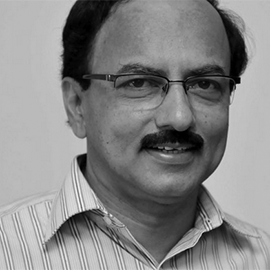

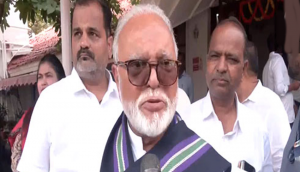
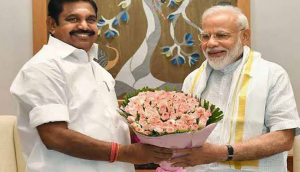
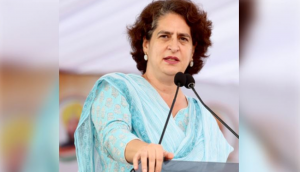
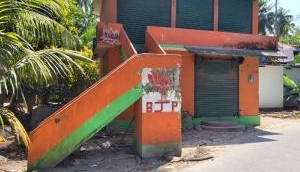
![BJP's Kapil Mishra recreates Shankar Mahadevan’s ‘Breathless’ song to highlight Delhi pollution [WATCH] BJP's Kapil Mishra recreates Shankar Mahadevan’s ‘Breathless’ song to highlight Delhi pollution [WATCH]](https://images.catchnews.com/upload/2022/11/03/kapil-mishra_240884_300x172.png)

![Anupam Kher shares pictures of his toned body on 67th birthday [MUST SEE] Anupam Kher shares pictures of his toned body on 67th birthday [MUST SEE]](https://images.catchnews.com/upload/2022/03/07/Anupam_kher_231145_300x172.jpg)






